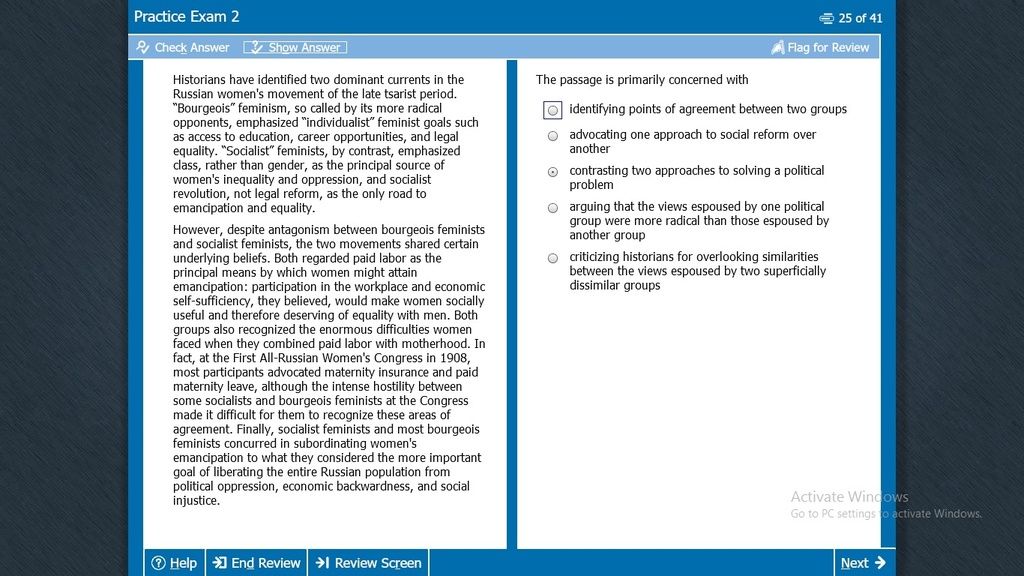However, despite antagonism between bourgeois feminists and socialist feminists, the two movements shared certain underlying beliefs. Both regarded paid labor as the principal means by which women might attain emancipation: participation in the workplace and economic self-sufficiency, they believed, would make women socially useful and therefore deserving of equality with men. Both groups also recognized the enormous difficulties women faced when they combined paid labor with motherhood. In fact, at the First All-Russian Women's Congress in 1908, most participants advocated maternity insurance and paid maternity leave, although the intense hostility between some socialists and bourgeois feminists at the Congress made it difficult for them to recognize these areas of agreement. Finally, socialist feminists and most bourgeois feminists concurred in subordinating
women's emancipation to what they considered the more important goal of liberating the entire Russian population from political oppression, economic
backwardness, and social injustice.
The passage is primarily concerned with
(A) identifying points of agreement between two groups
(B) advocating one approach to social reform over another
(C) contrasting two approaches to solving a political problem
(D) arguing that the views espoused by one political group were more radical than those espoused by another group
(E) criticizing historians for overlooking similarities between the views espoused by two superficially dissimilar groups
This question was posted before, but without image to prove the source, so it was not explained.

I attached the screenshot, so please help me to explain why the correct answer is choice A, not C.
I see that the issue in choice A is mentioned only in paragraph 2.
In choice C, someone said that there's no political problem in the passage. However, as in the last sentence in paragraph 1 "...and socialist revolution, not legal reform, as the only road to emancipation and equality". I think this is the problem that 2 approaches aimed to solve.